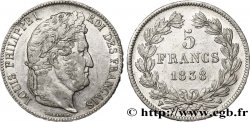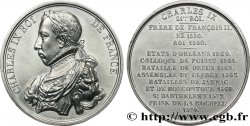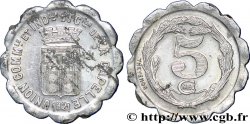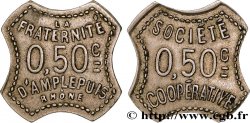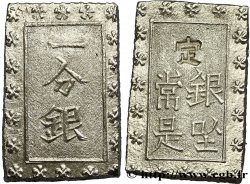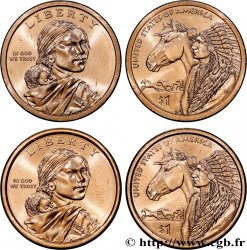E-auction 320-237599 - fme_536386 - LOUIS-PHILIPPE I Médaille, JULES JANIN, Vicomte de Chateaubriand
You must signin and be an approved bidder to bid, LOGIN TO BID. Accounts are subject to approval and the approval process takes place within 48 hours. Do not wait until the day a sale closes to register. Clicking on « bid » constitutes acceptance of the terms of use of cgb.fr private e-auctions.
Bids must be placed in whole Euro amounts only. The sale will start closing at the time stated on the item description; any bids received at the site after the closing time will not be executed. Transmission times may vary and bids could be rejected if you wait until the last second. For further information ckeck the E-auctions F.A.Q.
NO BUYER'S FEE.
NO BUYER'S FEE.
| Estimate : | 50 € |
| Price : | 20 € |
| Maximum bid : | 20 € |
| End of the sale : | 03 June 2019 18:30:00 |
| bidders : | 6 bidders |
Type : Médaille, JULES JANIN, Vicomte de Chateaubriand
Date: 1844
Mint name / Town : France, Bretagne
Metal : copper
Diameter : 41,5 mm
Orientation dies : 12 h.
Weight : 38,07 g.
Edge : lisse + proue CUIVRE
Puncheon : Proue (1842 - 1845)
Coments on the condition:
Patine marron avec des concrétions vertes à l’avers
Catalogue references :
Obverse
Obverse legend : F. A. VICOMTE DE - CHATEAUBRIAND.
Obverse description : Buste habillé de trois quarts face de Chateaubriand, signé : A. BOVY - D’APRES GIRODET.
Reverse
Reverse legend : LA BRETAGNE HISTORIQUE PAR JULES JANIN.
Reverse description : Écu couronné de Bretagne, signé : ERNEST BOURDIN EDITEUR 1844..
Commentary
Gabriel-Jules Janin, né à Saint-Étienne le 16 février 18041 est mort à Paris le 19 juin 1874, est un écrivain et critique dramatique français.
Fils d’un avocat, Janin reçoit une bonne éducation, d’abord dans sa ville natale puis au lycée Louis-le-Grand à Paris. Après un passage dans l’étude de l’avoué Jean-Baptiste Guillonnet-Merville, où il sera saute-ruisseau en même temps qu’Honoré de Balzac, il devient journaliste et travaille notamment à la Revue de Paris, à la Revue des deux Mondes, au Figaro et à la Quotidienne. Il fut parmi les fondateurs de la Revue de Paris et du Journal des Enfants. Il se fait connaître en 1827 avec le roman L’Âne mort et la femme guillotinée. La Confession en 1830, un peu moins profond, mais au style encore plus remarquable, et Barnave en 1831, où il attaque la famille d’Orléans, finissent d’asseoir sa réputation.
Entre-temps, il entre comme critique au Journal des Débats où il reste quarante ans. Son autorité le fait surnommer « le prince des critiques »..
Gabriel-Jules Janin, born in Saint-Étienne on February 16, 1804, died in Paris on June 19, 1874, was a French writer and drama critic. The son of a lawyer, Janin received a good education, first in his hometown and then at the Lycée Louis-le-Grand in Paris. After a stint in the office of the lawyer Jean-Baptiste Guillonnet-Merville, where he was a leaping brook at the same time as Honoré de Balzac, he became a journalist and worked notably for the Revue de Paris, the Revue des deux Mondes, Le Figaro and La Quotidienne. He was among the founders of the Revue de Paris and the Journal des Enfants. He became known in 1827 with the novel The Dead Donkey and the Guillotined Woman. The Confession in 1830, a little less profound, but with an even more remarkable style, and Barnave in 1831, in which he attacks the Orléans family, finally established his reputation. In the meantime, he joined the Journal des Débats as a critic, where he remained for forty years. His authority earned him the nickname \\\"the prince of critics.\\\"
Fils d’un avocat, Janin reçoit une bonne éducation, d’abord dans sa ville natale puis au lycée Louis-le-Grand à Paris. Après un passage dans l’étude de l’avoué Jean-Baptiste Guillonnet-Merville, où il sera saute-ruisseau en même temps qu’Honoré de Balzac, il devient journaliste et travaille notamment à la Revue de Paris, à la Revue des deux Mondes, au Figaro et à la Quotidienne. Il fut parmi les fondateurs de la Revue de Paris et du Journal des Enfants. Il se fait connaître en 1827 avec le roman L’Âne mort et la femme guillotinée. La Confession en 1830, un peu moins profond, mais au style encore plus remarquable, et Barnave en 1831, où il attaque la famille d’Orléans, finissent d’asseoir sa réputation.
Entre-temps, il entre comme critique au Journal des Débats où il reste quarante ans. Son autorité le fait surnommer « le prince des critiques »..
Gabriel-Jules Janin, born in Saint-Étienne on February 16, 1804, died in Paris on June 19, 1874, was a French writer and drama critic. The son of a lawyer, Janin received a good education, first in his hometown and then at the Lycée Louis-le-Grand in Paris. After a stint in the office of the lawyer Jean-Baptiste Guillonnet-Merville, where he was a leaping brook at the same time as Honoré de Balzac, he became a journalist and worked notably for the Revue de Paris, the Revue des deux Mondes, Le Figaro and La Quotidienne. He was among the founders of the Revue de Paris and the Journal des Enfants. He became known in 1827 with the novel The Dead Donkey and the Guillotined Woman. The Confession in 1830, a little less profound, but with an even more remarkable style, and Barnave in 1831, in which he attacks the Orléans family, finally established his reputation. In the meantime, he joined the Journal des Débats as a critic, where he remained for forty years. His authority earned him the nickname \\\"the prince of critics.\\\"








 Report a mistake
Report a mistake Print the page
Print the page Share my selection
Share my selection Ask a question
Ask a question Consign / sell
Consign / sell
 Full data
Full data